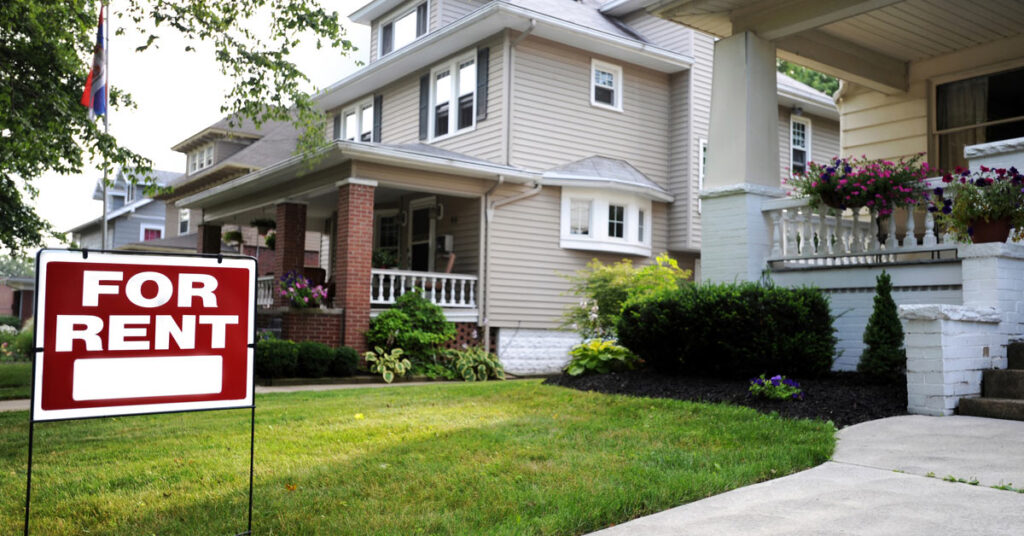In the rapidly advancing digital age, community safety initiatives have evolved beyond traditional neighborhood watch programs. Enter Virtual Neighborhood Watch, a cutting-edge approach that harnesses technology, social media platforms, and mobile apps to enhance community safety like never before. This innovative concept empowers residents to actively participate in safeguarding their neighborhoods through real-time information sharing, collaboration with local law enforcement, and a collective commitment to creating safer and more secure communities.

Using Technology For Community Safety
In the digital age, technology, and social media platforms play a crucial role in enhancing community safety through virtual neighborhood watch programs. Social media has become an integral part of our daily lives, providing an avenue for people to connect, share information, and raise awareness about safety concerns in their neighborhoods. Virtual neighborhood watch groups can utilize these platforms to create dedicated online communities where residents can share updates, report suspicious activities, and communicate with each other and local law enforcement.
The real-time nature of social media allows for swift dissemination of information, enabling community members to respond promptly to potential threats or emergencies. For example, if there is a break-in reported in a certain area, neighbors can quickly alert each other, stay vigilant, and take necessary precautions. Moreover, social media facilitates community engagement and fosters a sense of collective responsibility, encouraging residents to actively participate in neighborhood safety efforts.
Building A Strong Virtual Neighborhood Watch
At the core of a successful virtual neighborhood watch program is active community engagement and participation. The effectiveness of such initiatives heavily relies on the willingness of residents to take an active role in promoting safety within their neighborhoods.
The first step is to raise awareness among community members about the benefits of virtual neighborhood watch and how they can actively contribute. Educational campaigns, workshops, and community meetings can be organized to inform residents about the program’s goals, guidelines, and communication channels.
Utilizing user-friendly and accessible online platforms, such as dedicated websites or social media groups, allows community members to easily connect and share information. Regular updates, safety tips, and engaging content can keep residents invested and encourage their ongoing participation.
Encourage residents to volunteer for specific roles within the virtual neighborhood watch program. Roles may include moderators, social media managers, or communication coordinators. Providing residents with opportunities to actively contribute fosters a sense of ownership and commitment to the community’s safety.
Implement clear and straightforward reporting mechanisms for suspicious activities or incidents. Whether it’s through a dedicated hotline, app, or email, residents should feel comfortable reporting concerns without fear of repercussions.
Acknowledge and appreciate the contributions of active participants regularly. Recognizing community members who actively engage in promoting safety can motivate others to get involved.
Collaboration With Local Law Enforcement Agencies
Collaboration with local law enforcement agencies is instrumental in the success of virtual neighborhood watch programs. By working together, community members and law enforcement can pool their resources, expertise, and insights to address safety concerns effectively.
Initiate dialogues and partnerships with local law enforcement agencies to introduce the virtual neighborhood watch program and discuss areas of collaboration. Regular meetings can help build rapport and enhance communication channels.
Establish secure channels for information sharing between the virtual neighborhood watch program and law enforcement agencies. Timely and accurate information exchange enables law enforcement to respond promptly to reported incidents.
Organize joint training sessions or workshops where law enforcement can educate community members about crime prevention strategies, recognizing suspicious activities, and the appropriate way to report incidents.
Encourage law enforcement agencies to actively support and promote the virtual neighborhood watch program among residents. Their endorsement can enhance credibility and increase participation.
Outline procedures for coordination between community members and law enforcement during emergencies. Establish clear protocols for escalating urgent situations to ensure an efficient response.
Inclusivity And Diversity In Virtual Neighborhood Watch Programs
For virtual neighborhood watch programs to be effective, it’s essential to embrace inclusivity and diversity within the community. An inclusive approach ensures that all residents, regardless of background, feel welcome and valued in contributing to community safety.
Actively reach out to underrepresented groups within the community, including ethnic minorities, immigrants, and elderly residents. Engage with community leaders and organizations that represent these groups to ensure their voices are heard.
Provide information and communication in multiple languages to accommodate residents who may not be proficient in the predominant language of the community. This ensures that language barriers do not hinder participation. Be mindful of cultural differences and practices when promoting safety measures. Understanding cultural sensitivities can foster trust and cooperation among diverse residents.
Create safe spaces for residents to express their concerns and experiences related to safety. Encourage open dialogue and actively listen to the needs and perspectives of all community members. Strive to have a diverse leadership team that represents the various demographics of the community. Diverse leadership fosters inclusivity and ensures that decisions are made with a broad range of perspectives in mind.
Challenges And Concerns Of Virtual Neighborhood Watch Communities
While virtual neighborhood watch initiatives offer numerous benefits, they also raise legitimate privacy concerns. As residents share information about suspicious activities or incidents, it’s crucial to strike a balance between promoting community safety and respecting individuals’ right to privacy.
Clearly communicate the purpose and scope of the virtual neighborhood watch program to all participants. Ensure that community members provide informed consent before sharing information or data. Offer anonymity options for individuals who wish to report suspicious activities without revealing their identities. This can encourage reporting while protecting the privacy of those involved.
Utilize encrypted and secure communication channels to safeguard shared information from unauthorized access or data breaches. Establish clear data retention policies that outline the duration for which shared information will be stored. Limiting data retention helps minimize potential privacy risks.
Educate community members about privacy best practices, emphasizing the importance of respecting others’ privacy and handling sensitive information responsibly. Ensure that the virtual neighborhood watch program complies with relevant data protection laws and regulations to safeguard individual privacy rights.
Ensuring Accuracy And Reliability Of Shared Information
The success of a virtual neighborhood watch program relies heavily on the accuracy and reliability of the information shared among community members. Inaccurate or misleading information can lead to unnecessary panic or misinformation.
Encourage community members to verify the source of information before sharing it within the neighborhood watch group. Reliable sources, such as official law enforcement channels or trusted community leaders, should be prioritized. Establish fact-checking mechanisms within the virtual neighborhood watch group to verify the accuracy of information before it is disseminated.
Appoint responsible moderators to oversee the content shared in the virtual neighborhood watch platforms. Moderators can remove false or inappropriate information and ensure adherence to guidelines.
Develop a process for community members to report information to law enforcement for verification when necessary. This ensures that law enforcement can validate critical information before taking action.
Legal Implications And Responsibilities Of Community Members
Participating in a virtual neighborhood watch program involves legal implications and responsibilities that community members should be mindful of. It is crucial to adopt a non-vigilante approach, refraining from taking the law into their own hands, and instead, promptly reporting suspicious activities to law enforcement. When sharing information or discussing potential suspects, community members must avoid engaging in defamation or harassment, as unsubstantiated accusations may lead to legal consequences.
Moreover, community members have a duty to report incidents to law enforcement rather than attempting to handle them independently. Respecting the privacy of individuals involved in reported incidents is paramount, and it is essential to comply with data protection laws when sharing information. Understanding any relevant Good Samaritan or immunity laws that protect individuals acting in good faith to report crimes or assist others is vital.
Collaborating With Local Businesses And Organizations
Collaborating with local businesses and community organizations is a valuable aspect of a successful virtual neighborhood watch program. Such partnerships can enhance the program’s reach, resources, and overall effectiveness in promoting community safety.
Local businesses may contribute funds to support the virtual neighborhood watch program’s operational costs, such as website maintenance, communication tools, or promotional materials. Financial backing ensures the program’s sustainability and expansion.
Businesses can sponsor community events, workshops, or safety campaigns organized by the virtual neighborhood watch program. Donations of safety equipment, such as security cameras or lighting, can also significantly contribute to enhancing neighborhood security.
Businesses and community organizations can use their networks and platforms to promote the virtual neighborhood watch program, encouraging more community members to join and participate actively. Promotional activities could include social media shout-outs, newsletter features, or flyers at local establishments.
Businesses may offer their resources and expertise to strengthen the program’s impact. For example, a security company could provide insights into effective crime prevention strategies, while a technology company may offer advice on cybersecurity measures.
Local businesses or organizations with suitable facilities can provide spaces for virtual neighborhood watch meetings, workshops, or training sessions. Access to physical spaces fosters a sense of community and facilitates face-to-face interactions. Collaborating businesses and organizations can host community engagement events, bringing together residents and local law enforcement to discuss safety concerns, share information, and build connections.
Utilizing Apps for Neighborhood Watch
In the digital age, mobile apps play a pivotal role in enhancing neighborhood watch programs, offering convenient and efficient ways to promote community safety. Here’s how to effectively use apps to strengthen your neighborhood watch:
Look for a dedicated neighborhood watch app specifically designed for community safety and communication. Popular apps like Nextdoor and Citizen offer features tailored to neighborhood watch initiatives, enabling residents to share safety updates, report incidents, and connect with local law enforcement.
Create a virtual community within the app where residents can join and actively participate. Ensure that the app covers the geographic area of your neighborhood, allowing everyone to access relevant safety information.
Apps for neighborhood watch programs often enable real-time incident reporting. Encourage residents to report suspicious activities, crimes, or emergencies promptly. Instant reporting facilitates swift action by law enforcement and community members.
The app should facilitate two-way communication, allowing community members to interact with each other and with local law enforcement. This feature enables residents to seek clarification, provide additional information, or request assistance if needed.
Apps offer a convenient platform for sharing safety tips, crime prevention strategies, and updates on recent incidents. Use the app to disseminate valuable information that empowers community members to stay vigilant and take precautionary measures.
Leverage the app’s notification system to send out emergency alerts and safety warnings. Residents can receive timely notifications about potential threats or critical information from law enforcement. Emphasize the importance of respecting privacy and adhering to data security practices when using the app. Encourage community members to avoid sharing sensitive personal information or unverified details.
Organize virtual neighborhood watch meetings, workshops, or webinars through the app. Virtual gatherings allow community members to engage, share ideas, and collaborate on safety initiatives without physical constraints.
To encourage reporting, ensure that the app provides an option for anonymous reporting. Anonymity allows residents to share information without fear of reprisal, fostering a safer environment for reporting suspicious activities.
Promote community engagement and inclusivity within the app. Encourage all residents, regardless of age, background, or language, to participate actively in the virtual neighborhood watch. Regularly monitor the app’s usage and evaluate its effectiveness in enhancing community safety. Gather feedback from residents to identify areas for improvement and optimize the app’s features.
Conclusion
Virtual Neighborhood Watch programs revolutionize community safety in the digital age through technology, social media platforms, and mobile apps. These initiatives empower residents to actively safeguard their neighborhoods, fostering a sense of collective responsibility and trust. Addressing privacy concerns, ensuring information accuracy, and understanding legal responsibilities ensures responsible operation. Collaborating with local businesses, community organizations, and other safety initiatives provides additional resources and support. By combining technology and community unity, virtual neighborhood watch programs create safer neighborhoods, enhancing the sense of belonging among residents and promoting a shared purpose in building stronger communities.




